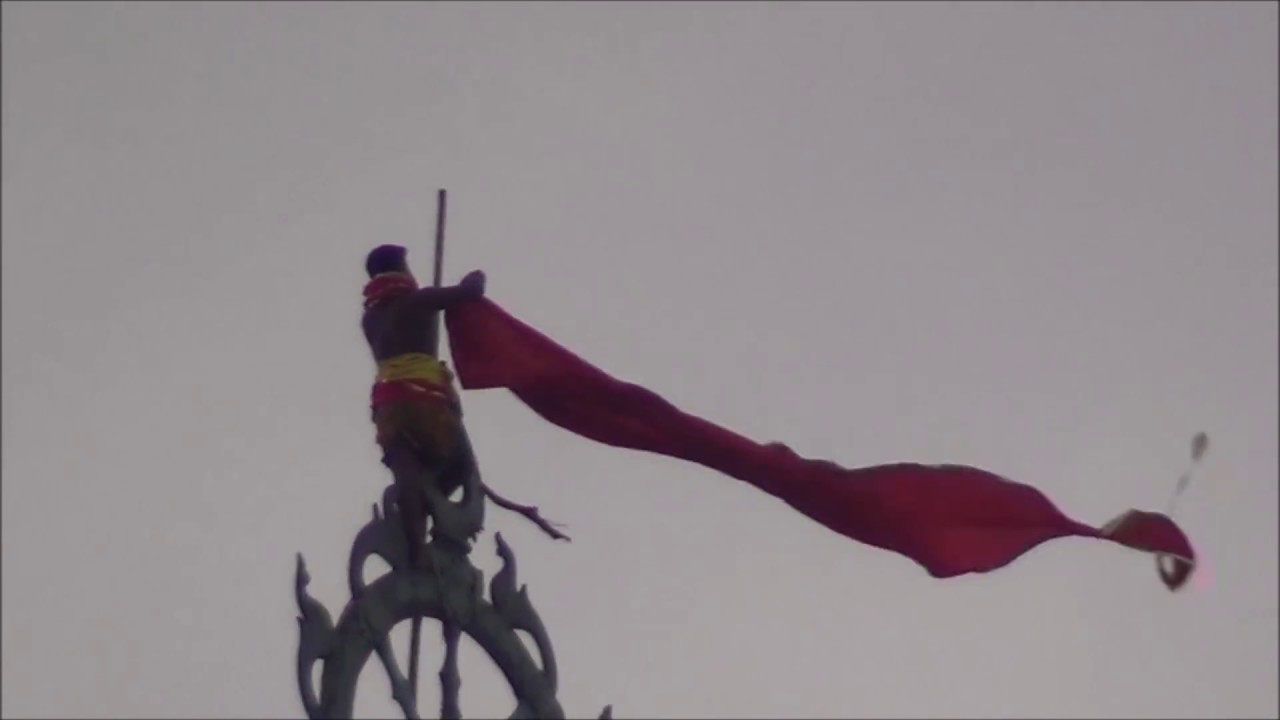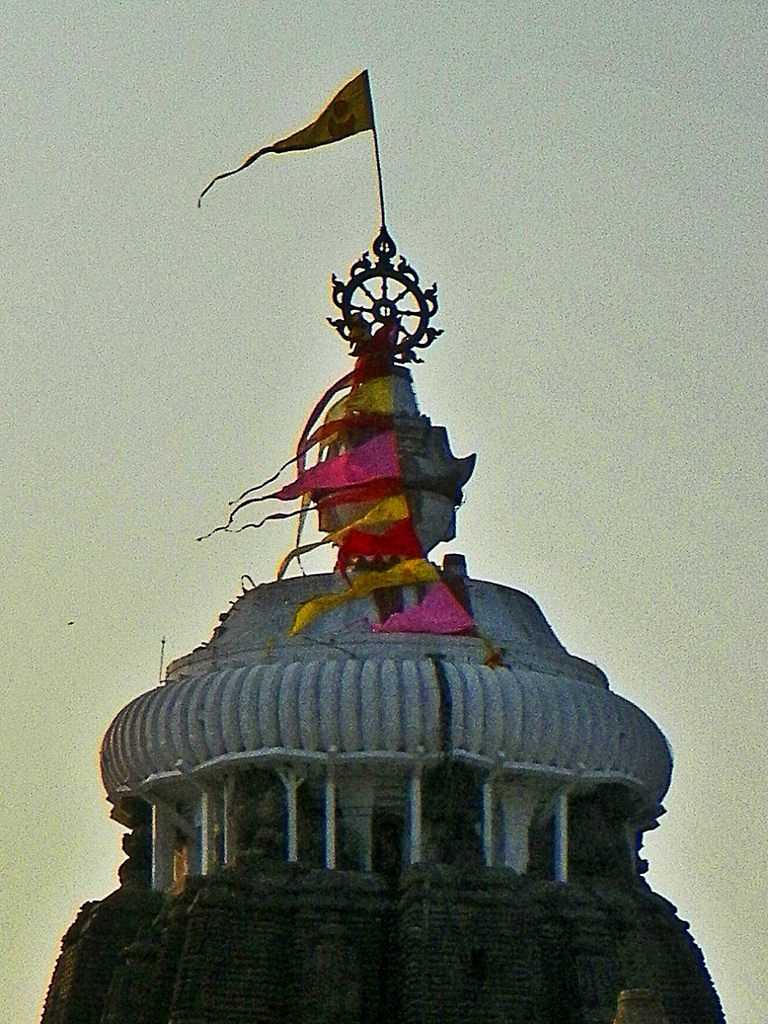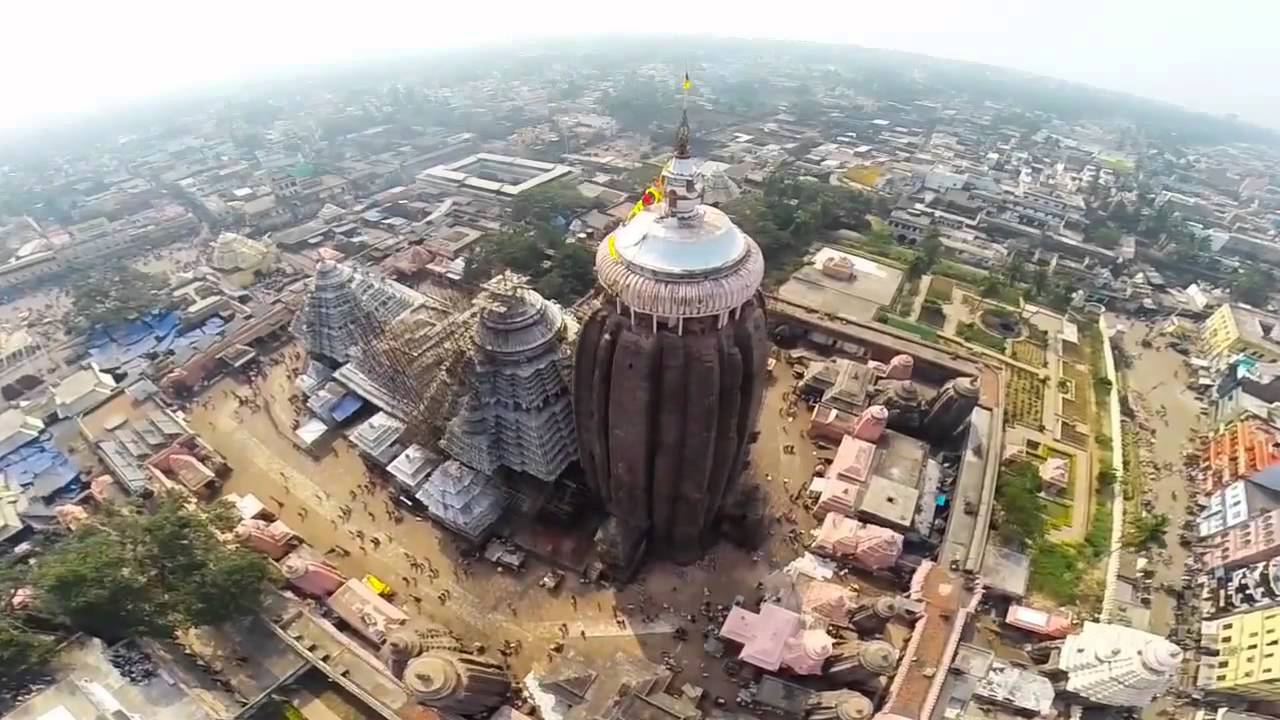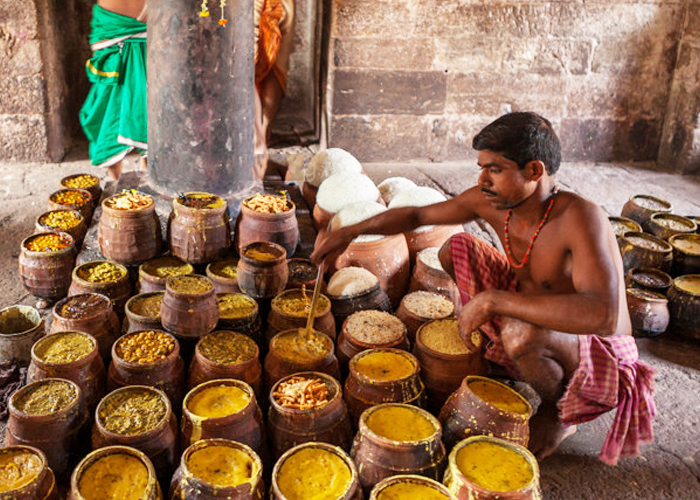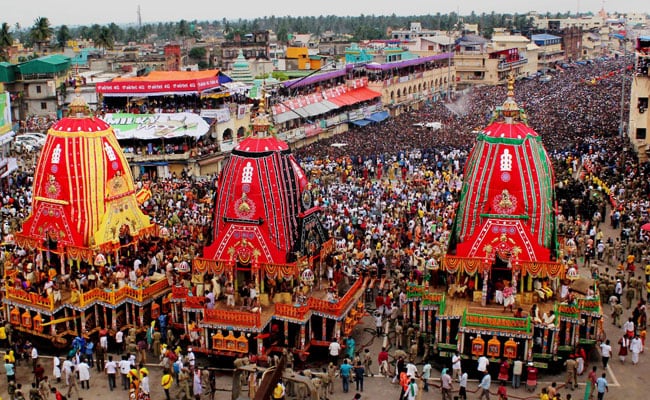It took three generations worth of time and effort to brick up the humongous walls of the famous Puri’s Jagannath Temple located in Odisha. The temple is of utmost importance to the Hindu devotees as it is one of the Char-Dham Pilgrimages. It also serves as a mighty historical structure built about millennia ago, in the year 1078. Millions of people visit Odisha to gain Lord Jagannath blessings.
The temple is famous for its annual Rath Yatra which is witnessed by millions as the three colossal chariots carry the deities. The English word Juggernaut shares its origin from this annual parade. But that’s not the sole speciality of the place! Some enigmatic activities without any scientific explanations have caught the travellers eye worldwide. Here are some of these mind boggling facts –
1. Defying Nature’s Code of Conduct
Even a child knows any piece of cloth is dominated by the wind to fly according to its course. The same principle has numerous applications; from the giant sails on your ship to a small flag in your hand all follow the same code. But it looks like the flag mounted on the top of the Jagannath Temple is a unique exception to the principle. This particular flag flows in the opposite direction to the wind’s course without any scientific background to back it up.

2. The Climb
Every day a priest scrambles the walls of the temple with a height equivalent to that of a 45 storey building, to change the flag atop the temple dome. This ritual dates far back to the day the temple was built. The practice is done with bare hands without any protective gear. It’s believed if the ritual is skipped one day from the calendar, the temple will be shut down for a long 18 years. This might make the professional climbers jealous.
3. A light with no darkness
A necessary detail while sketching anything is shading. Shading happens when sunlight glows one part of the subject leaving a shadow on the other, which ultimately triggers shade. But, what if something has no shadow?
The temple is reported to have no shadow at all, at any time of the day from any directions possible. Could it be an architectural marvel or the Lord Jagannath’s message to humanity?
4. The Mystery of The Sudarshan Chakra
There are two mysteries present at the pinnacle of the temple in the form of the Sudarshan Chakra. The first oddity revolves around the theory of how the hard metal weighing about a tonne, just got up there without any machinery just with a human force of that century.
The second is one deal with the architectural technique related to the Chakra. From every direction you look, the Chakra looks back with the same appearance. It’s like it was designed to look just the same from every direction.
5. Nothing’s Above God, So Nothing Fly Above It Either
The sky is the bird domain. We see birds sitting, resting and flying above our heads and rooftops all the time. But, this particular area is restricted, not even a single bird is encountered above the temple dome, even an airplane could not be seen hovering above the temple.
6. The Food Is Never Futile Here
In Hindu mythology, wasting food is considered a bad sign; the Temple crew follows the same. A total number of people visiting the temple varies between 2,000 to 2, 00,000 people every day. Miraculously, the Mahaprasad prepared every day is never wasted, not even a bite. Is it an effective management or the Lord’s will?
7. Mute Sea
Seconds, after you put the first step inside the temple from Singha Dwara entrance, the audibility to the ocean waves is entirely lost. This phenomenon is more prominent in the evening time. Again, no scientific explanation adds up to this fact. The sound returns when you leave the temple.
According to the local lore, it was the will of the Subhadra Mayi, the sister of the two lords who wished for serenity within the temple gates. Hence her will was duly fulfilled.
8. Reverse gear of the Breeze
Take any place on Earth, on daytime the breeze from sea comes to land and the opposite happens in the evening. But, in Puri, the breeze has a tendency to contradict and opt for the exact opposite direction. In the daytime, the breeze blows from land to sea and the opposite in the evening happens.
9. Magical Methods to Cook
The traditional way to cook the Mahaprasad is preserved by the priests here. Exactly seven pots are used as vessels mounted over one another and are cooked using firewood. Enchantingly, the top most pot is cooked first, and the rest follows the same order!
10. Deities Disintegration (Nabakalebara)
The deities are buried from every 19/18/12 years, one above another, replaced by new ones. These deities are made up of neem wood and are believe to be disintegrated on their own. Navakalevara meaning “New Body or re-embodiment” is a composite of two words ‘Nava’ meaning “New” and ‘Kalevara’ meaning “Body”. It is only the body of the gods that is changed during the rituals as it would be deteriorate with time but the Brahman or the “Brahmapadartha (soul-substance)” within the wooden body (called “Daru Brahma” or the “Prime-Soul enshrined in wood”) is transferred from the old images to the new through a secret religious rigmarole.
11. The Rath Yatra
Triads are usually worshiped in the sanctum of the temple at Puri, but once during the month of Asadha (Rainy Season of Odisha, usually falling in month of June or July), they are brought out onto the Bada Danda (main street of Puri) and travel (3 km) to the Shri Gundicha Temple, in huge chariots (ratha), allowing the public to have darśana (Holy view). This festival is known as Rath Yatra, meaning the journey (yatra) of the chariots (ratha). The Rathas are huge wheeled wooden structures, which are built anew every year and are pulled by the devotees. The chariot for Jagannath is approximately 45 feet high and 35 feet square and takes about 2 months to construct. The artists and painters of Puri decorate the cars and paint flower petals and other designs on the wheels, the wood-carved charioteer and horses, and the inverted lotuses on the wall behind the throne. The huge chariots of Jagannath pulled during Rath Yatra is the etymological origin of the English word Juggernaut. The Ratha-Yatra is also termed as the Shri Gundicha yatra.
